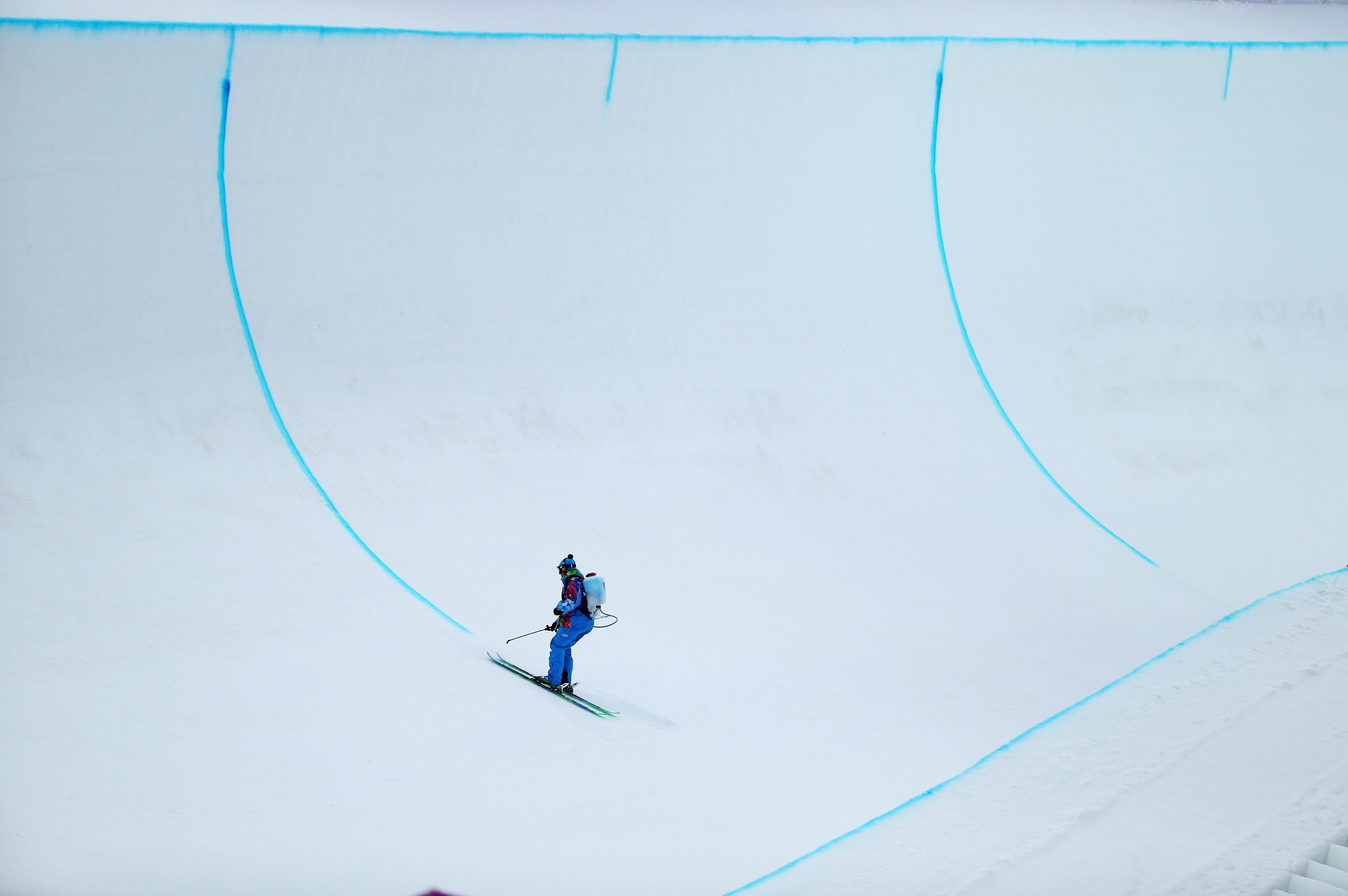Another day, another snowboarding controversy at the Sochi Olympics. Last week, American snowboarder Shaun White pulled out of men’s slopestyle amid concerns that the course was too dangerous, saying, “the potential risk of injury is a bit too much for me to gamble my other Olympics goals on.” Now, snowboarders are bashing the Sochi halfpipe, calling it amateurish and unfit for Olympic competition. “It’s just dangerous because it’s crappy, you know?” said American Hannah Teter, who suggested that organizers postpone upcoming events rather than force athletes to perform in suboptimal conditions. (The men’s halfpipe, with White competing for his third consecutive gold medal, is set for Tuesday, while the women’s event is scheduled for Wednesday.) American snowboarder Danny Davis told Yahoo Sports that the Sochi halfpipe was “garbage,” adding later that the course “needs a lot of work because they hired the wrong folks to do it.” Australian snowboarder Torah Bright echoed Davis’ complaints, saying that the “people who are constructing the pipe aren’t the greatest at their craft and it makes it challenging for us.”
While there undoubtedly are problems with the Sochi halfpipe, many of the issues can be blamed on the warm weather. It’s hard for even the most skilled technicians to keep a halfpipe in immaculate condition when it’s above freezing.
But there’s more to it than that. The harsh criticisms voiced by Bright, Davis, and others trace back to a long-standing rift between snowboarders and the sport’s international governing body. The people hired to design and construct the Olympic venues are professionals with experience building courses for international competitions and the International Ski Federation (FIS) circuit. But they’re not the same people employed by the events favored by much of the snowboarding community—and that’s the crux of the problem.
Modern snowboarding began as an “extreme” alternative to skiing, one contested outside the Olympics-approved mainstream. In the sport’s early days, competitions were governed by a body called the International Snowboard Federation (ISF), which was founded and managed by snowboarders who understood and embraced the sport’s mellow, gnarly ethos. When halfpipe and slalom snowboarding made their Olympic debuts in 1998, however, the International Olympic Committee bypassed the ISF entirely and placed the responsibility for organizing and judging the competition in the hands of FIS, the group responsible for the other Olympic ski events. This caused a huge furor in the snowboarding community, and superstar Terje Håkonsen, favored to win gold at the sport’s debut, chose to boycott the Nagano Olympics rather than compete. As the Economist put it in a 2011 article, Håkonsen was “outraged at what he saw as a hostile takeover by FIS, with the IOC’s complicity. No one seemed to care what snowboarders themselves wanted.”
So snowboarders have resented the FIS from the start, and the resentment hasn’t decreased over time. Many believe the FIS just doesn’t get snowboarders, and has no interest in listening to their input on how international events ought to be judged and organized. In a 2011 article for Transworld Snowboarding, Matt Barr griped about “how fundamentally ridiculous it is that a ski federation looks set to control the way snowboarding is represented and organized on the biggest sporting platform on the planet.” That same year, American snowboarder Chas Guldemond founded an advocacy group called We Are Snowboarding in the hope of forcing the FIS to listen to snowboarders’ opinions. (The group apparently didn’t have much of an impact: There hasn’t been an official post on its Facebook page since December 2012.)
What does this have to do with the Sochi slopestyle course and halfpipe? It comes down to the FIS choosing to do things its own way rather than listen to what snowboarders want. When they’re not at the Olympics, the world’s top snowboarders perform on various pro tours, at ESPN’s Winter X Games, and at showcases that cater to snowboarders’ preferences and grew out of snowboarding culture. The halfpipes and slopestyle courses at the Winter X Games and other pro events are built by an American company called Snow Park Technologies. Snowboarders love Snow Park Technologies, a firm they believe truly understands what kinds of courses allow athletes to perform at their best.
When Danny Davis says the course “needs a lot of work because they hired the wrong folks to do it,” he means that the IOC screwed up when they didn’t hire Snow Park Technologies. Olympic-quality snowboarders hate that the FIS refuses to hire who they believe are the best, most knowledgeable course designers. Instead, the FIS—perhaps understandably—prefers to use its own people, generally non-American designers with experience building for FIS events. Fair or not, a lot of snowboarders see these companies as vastly inferior to American builders. For snowboarders, this is just another example of FIS imperiousness. And that’s why the complaints over the Sochi halfpipe have been so loud and bitter.
